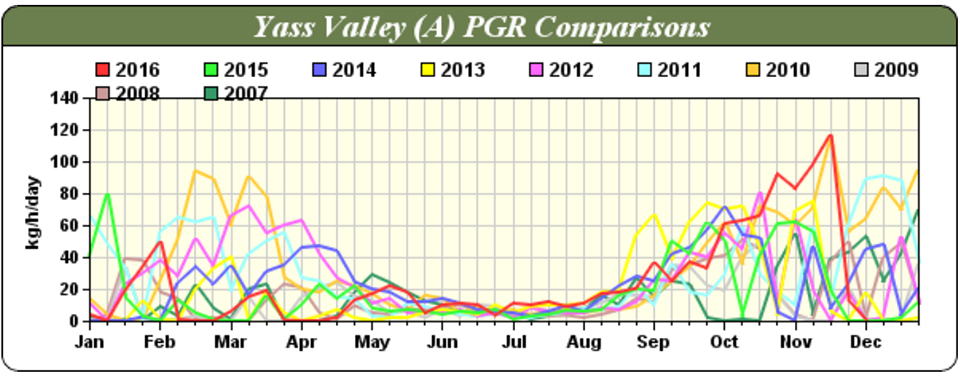Feed availability
Seasonal pasture availability varies across regions and will have a direct relationship to the carrying capacity of a property and hence the efficiency of production. Having high stocking rates or lambing at the wrong time can leave big gaps in feed availability, which may need to be filled with costly supplementary feeding.
Choose the time of lambing to coincide with the peak pasture availability. A handy guide is to consult the ‘Pastures from Space’ website to see regional or farm pasture growth rates over the year.

Figure 1: Pasture growth estimates over the period 2007-2016 in the Yass Valley Shire (NSW)-courtesy of CSIRO ‘Pastures from Space’
As can be seen from the figure above, in the period 2007-2016, pasture growth in the Yass Valley shire dipped in the period June to August. Pasture conditions were variable year to year in other months, but a trend is seen towards peaks in growth March-April and again in September to November. Note that where grass seeds are a problem this is an important consideration for time of lambing.